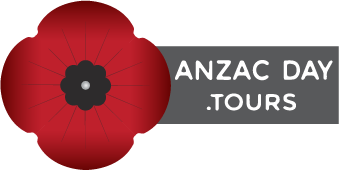Here are 20 lesser-known facts about ANZAC Day and the Gallipoli Campaign that highlight the bravery, sacrifice, and legacy of the ANZACs
1. The ANZACs Landed in the Wrong Place
The ANZAC forces were intended to land at Gaba Tepe, but navigational errors led them to ANZAC Cove, a more difficult area with steep cliffs and rugged terrain, complicating their mission from the start.
2. ANZAC Day Was First Celebrated in 1916
The first ANZAC Day was observed on April 25, 1916, just a year after the landings at Gallipoli, with commemorative services in Australia, New Zealand, London, and even Egypt.
3. The Gallipoli Campaign Lasted 8 Months
Though ANZAC Day focuses on the landings, the Gallipoli campaign stretched from April 25, 1915, to December 1915, resulting in over 130,000 deaths on both sides.
4. John Simpson and His Donkey Became ANZAC Icons
Australian John Simpson Kirkpatrick used a donkey to rescue wounded soldiers, becoming a symbol of selflessness. His New Zealand counterpart, Dick Henderson, continued the practice after Simpson’s death.
5. ANZAC Day Is Observed Worldwide
ANZAC Day is commemorated not only in Australia and New Zealand but also in London, Gallipoli, and other international locations where expatriates gather to honor the ANZACs
6. “The Last Post” Is a Central Part of the Dawn Service
The mournful bugle call, “The Last Post”, plays a key role in ANZAC Day services, symbolizing the end of the day’s fighting and the peace earned through sacrifice.
7. The Youngest ANZAC Was Just 14 Years Old
James Charles Martin, the youngest known ANZAC soldier, was only 14 years old when he enlisted. He tragically died from illness while serving at Gallipoli.
8. There’s a Memorial at ANZAC Cove
The ANZAC Cove Memorial features a famous message from Mustafa Kemal Atatürk, offering reconciliation and comfort to the families of fallen ANZAC soldiers.
9. Gallipoli Inspired the Red Poppy Symbol
While often associated with Remembrance Day, the red poppy is also worn on ANZAC Day in honor of the soldiers who fought and died during World War I.
10. Gallipoli Was Australia and New Zealand’s First Major Military Campaign
The Gallipoli Campaign marked the first time Australia and New Zealand fought as independent nations in a major conflict, cementing its importance in their national identities
11. The Evacuation Was a Tactical Success
Despite the failure of the campaign, the evacuation of the Gallipoli Peninsula in December 1915 is considered one of the most successful operations, with minimal casualties.
12. Gallipoli’s Harsh Terrain Was a Major Obstacle
The steep cliffs and rugged landscapes at ANZAC Cove were a significant challenge for the soldiers, making it difficult to advance and hold ground.
13. The Trenches Were Often Just a Few Meters Apart
In some areas, the Allied and Ottoman trenches were as close as 10 meters apart, creating intense fighting conditions and high casualty rates.
14. Over 8,000 Australians Died at Gallipoli
Approximately 8,709 Australians were killed during the Gallipoli campaign, along with 2,721 New Zealanders, making it a significant loss for both countries.
15. ANZAC Day Was Not Always Popular
In the 1970s, ANZAC Day saw a decline in popularity, especially during the Vietnam War era. However, the 1980s saw a resurgence, and it is now one of Australia and New Zealand’s most important national days.
16. The Name ANZAC Was Legally Protected in 1916
In 1916, the Australian government passed legislation to protect the word ANZAC from misuse, making it illegal to use it in any unauthorized commercial context.
17. ANZAC Day Marches Include Descendants
While the marches originally only included veterans, in recent years, descendants of ANZAC soldiers have been allowed to march, carrying their ancestors’ medals.
18. The Ottoman Commander Became Turkey’s First President
The Ottoman commander at Gallipoli, Mustafa Kemal Atatürk, would go on to become the first president of modern Turkey and remains one of the country’s most revered leaders.
19. Many ANZAC Soldiers Went on to Fight in Europe
After the Gallipoli campaign ended, many ANZAC soldiers were redeployed to the Western Front in Europe, where they continued to fight in some of the war’s bloodiest battles.
20. ANZAC Day and Two-Up
Playing Two-Up, a traditional gambling game, is a major part of ANZAC Day celebrations in Australia. It’s one of the few days of the year when the game is legally played in public venues, as a tribute to the soldiers who played it during World War I.
